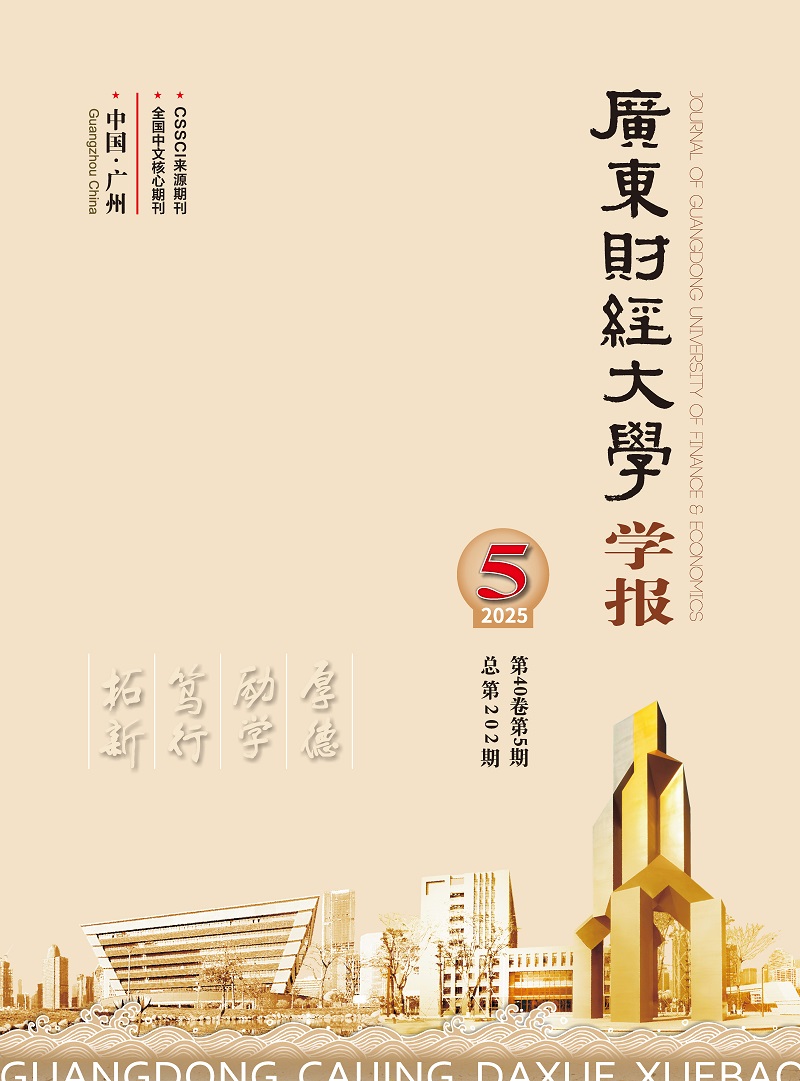The development of digital technology not only profoundly reshapes the trade patterns among regions, but also influences the behavior of patent technology transfer among regions through the relationship network formed by digital trade flows. Based on interregional patent transfer data released by the National Intellectual Property Administration and the enterprise value-added tax special invoice data collected by the State Taxation Administration, this study empirically examines the impact of digital trade flows between regions on patent technology transfer behavior using a gravity model. The findings reveal that digital trade flows between regions significantly increase the number of patent technology transfers; a conclusion remains robust after a series of tests, including instrumental variable analysis. Mechanism analysis indicates that digital trade flows between regions enhance the digital infrastructure level of the purchasing region, promote industrial upgrading, and stimulate innovation awareness, thereby increasing the demand for technological innovation and ultimately boosting intercity patent technology transfers. The heterogeneity analysis reveals that the impact of intercity digital trade flows on patent transfers varies depending on the relative geographical location, digitalization level, trade level of the cities, as well as the type of patent transfer. Further extended analysis reveals that a city's degree centrality in the patent technology transfer network decreases, but the strength of the patent technology transfer relationships with selling regions increases. This suggests that purchasing regions are more inclined to engage in patent technology transfers with cities they already have trade ties with, rather than establishing new technological connections.
Based on a micro-level database of listed companies, this study empirically examines the impact of negative media coverage on foreign capital withdrawal and its underlying mechanisms. The results indicate: First, negative media coverage significantly increases the probability of foreign capital withdrawal, with online media exhibiting an "amplification effect" in this process, a conclusion still true after a series of tests; second, reducing corporate net profit margins, intensifying financing constraints, and increasing stock market volatility are key channels through which negative media coverage elevates the probability of foreign capital withdrawal; third, the intensifying effect of negative media coverage on foreign capital withdrawal is more pronounced for non-state-owned enterprises, labor-intensive enterprises, and firms in highly competitive industries. Further analysis reveals that among various dimensions of online negative coverage, reports targeting company executives exert the most dominant influence. From an internal-external adjustment perspective, the study examines how strengthening corporate capabilities and government policy support mitigate the impact of negative media coverage. It indicates that improvements in corporate ESG performance, advancement of digital transformation, optimization of government administrative efficiency, and implementation of tax incentive policies can effectively reduce the shock of negative media coverage on foreign capital withdrawal. This study holds certain reference value for China in preventing foreign capital outflow risks and establishing a collaborative governance framework between enterprises and the government under the policy framework of "stabilizing foreign investment."
Promoting Chinese path to modernization with high-quality development needs to give better play to the leading role of government investment. The Chinese government has a preference for investing in upstream sectors and provides support through industrial policies, thus forming a vertical production structure. This paper attempts to introduce the theory of vertical structure into the study of spatial economics, and uses the "156 Project" as a natural experiment to empirically investigate the impact of industrial investment on the extension of regional industry chains. It is found that the more investment a district's upstream industrial sector receives, the higher the proportion and agglomeration level of upstream industrial industries in its long-term industrial structure; in terms of mechanism, due to the existence of vertical structure, investment in upstream industrial industries suppresses the market competitiveness of local related industries, and the higher the upstream degree of the investment industry, the more obvious its inhibitory effect on downstream enterprises. Further analysis shows that increasing the production segmentation length of the invested industry chain helps improve the total factor productivity of local related enterprises. The conclusion of this study indicates that in order to achieve satisfactory long-term results in government industrial investment, it is necessary to reduce market structure distortions at the industry level.
In the critical period of China's economic growth shift, the mode of "open bidding for selecting the best candidates" is an strategic deployment for deepening the innovation system and mechanism reform, which can effectively curb the phenomenon of the enterprise innovation bubble. This paper takes China's A-share listed companies from 2016 to 2024 as the research object and uses manual methods to collect the list of listed companies actually participating in the provincial or municipal "open bidding for selecting the best candidates" in each year to explore the impact and its mechanism of the mode of "open bidding for selecting the best candidates" on the enterprise innovation bubble. The results show that the innovation bubble can be significantly suppressed by the mode of "open bidding for selecting the best candidates", and the conclusion is still valid after a series of robustness tests. From the perspective of innovation factor agglomeration, the mode can effectively exert knowledge effect, capital effect, and resource effect by expanding enterprise knowledge width, attracting patient capital injection, and promoting enterprise industry-university-research cooperation, thus restraining the enterprise innovation bubble. Heterogeneity analysis results show that for the samples with deeper digital government construction, higher financial agglomeration level, and weak regional innovation endowment, the mode of "open bidding for selecting the best candidates" has a more significant inhibitory effect on the enterprise innovation bubble. The analysis of economic consequences shows that the suppression effect of the mode on the enterprise innovation bubble has brought about the simplification and upgrading of enterprise labor and employment. The research conclusions provide theoretical reference to further promote the implementation of the mode of "open bidding for selecting the best candidates", and restrain the phenomenon of enterprise innovation bubbles.
As a crucial tool of national supervision and governance, whether economic responsibility audit can guide state-owned enterprises (SOEs) to "shift from the virtual to the real economy" is a significant issue widely concerned by both theoretical and practical circles. Utilizing the implementation of the New Regulations on Economic Responsibility Audit in 2019 as a quasi-natural experiment, this study empirically examines the impact of economic responsibility audit on the financial asset allocation of SOEs. The findings reveal that economic responsibility audit significantly reduces the level of financial asset allocation in SOEs, with the underlying mechanisms being the enhancement of internal control quality and the increase in investments in real capital. Further analysis indicates that this inhibitory effect is more pronounced in local SOEs, enterprises with high capital market attention, and those with a separation of the two positions (chairman and CEO). This research not only enriches and expands the literature on the factors influencing corporate financial asset allocation and the economic consequences of economic responsibility audits but also provides micro-level evidence for effectively guiding SOEs to "shift from the virtual to the real economy". Furthermore, it offers important implications for strengthening SOE governance and resolving as well as preventing financial risks.
The increase in the markup of manufacturing firms is an intuitive reflection of building a strong manufacturing nation. This paper takes the "Smart Manufacturing Pilot Demonstration Action" as a quasi-natural experiment to comprehensively evaluate the impact of smart manufacturing on firm markup. The study finds that smart manufacturing enhances firm markup by improving innovation capabilities and optimizing resource allocation, and the effect of smart manufacturing on markup is more pronounced for mature firms, state-owned enterprises, firms in industries with rapid technological change, and firms located in the central and eastern regions. Further discussion confirms that the higher the degree of a firm's digital transformation, the stronger the effect of smart manufacturing on enhancing firm markup. The conclusions of this study provide theoretical support for continuously advancing the intelligent transformation and upgrading of the manufacturing industry.
Robots are profoundly changing the global production mode and labor market structure, and have a complex and far-reaching impact on income distribution. It is pointed out that the overall evolution direction of labor income depends on the production relationship between machine capital and labor, and the dependence of machine capital on workers' skills and gender differences among workers with different skills determine the changing trend of skill wage premium and gender wage gap, which provides consistent logical support for understanding the overall evolution and structural differentiation of workers' compensation under the application of robots. Based on the panel data of China city and the CLDS, the empirical tests show that the current robot application will reduce labor income share, expand the skill wage premium and narrow the gender income gap. Besides, the influence of robot application on workers' compensation gradually appears after 2013. Heterogeneity tests show that the impact of robot application on labor income share is more significant in the central and western regions, the impact on skill wage premium is more prominent in the eastern and western regions, non-young workers and workers in the tertiary industry, and the role of narrowing the gender wage gap is greater in the western region, young workers and workers in the secondary industry. The mechanism tests show that the substitution effect of capital deepening and employment shock, and the complementary effect of skill upgrading and industrial transformation are the dual channels through which robot application affects workers' compensation. The research provides countermeasures and enlightenment for the government to promote high-quality economic development with both efficiency and fairness.
Population aging has become a major pressure and significant challenge affecting China's social and economic development. How to build Social Old-age Security Systems that adapt to the needs of an aging society is a continuous focus of the academic attention. Based on carrying capacity theory, this study proposes the concept of carrying capacity of social old-age security systems. Through constructing an "economy-service" two-dimensional analytical framework, it systematically elucidates China's carrying capacity of social old-age security under the pressure of population aging. Temporally, from 2011 to 2022, China's carrying capacity of social old-age security systems increased from a baseline value of 0.214 to 0.323, with both economic security and service provision showing fluctuating upward trends. Spatially, based on different resource endowments and developmental stages, the provinces have developed differentiated pathways in their carrying capacity of social old-age security systems. Further research reveals an 'inverted U' lagged-type dynamic relationship between population aging and the carrying capacity of social old-age security systems. Three core mechanisms emerge: structural dividend effects, elastic constraint effects, and compound pressure effects. Notably, the intrinsic mechanisms through which population aging influences economic carrying capacity and service carrying capacity, demonstrate significant differences. This study provides theoretical foundations and policy insights for constructing social old-age security systems that adapt to population aging.
数字普惠金融发展对产业结构升级具有重要积极意义。在对数字普惠金融发展与产业结构升级之间的关系进行理论分析的基础上, 基于283个地级以上城市2011—2015年的面板数据, 采用面板门槛模型等回归方法, 实证分析数字普惠金融发展及其各维度发展与产业结构升级之间的关系。结果表明: 数字普惠金融发展与产业结构升级之间存在非线性关系; 数字普惠金融发展存在瓶颈, 具有门槛效应; 数字普惠金融覆盖广度对产业结构升级具有长期且显著的促进作用, 数字普惠金融的使用深度和数字化程度与产业结构升级之间存在非线性关系; 不同区域的数字普惠金融发展对产业结构升级的非线性效应具有异质性, 对产业结构升级的正效应从东部到中西部逐级增强。因而政府部门和金融机构应加大建设数字金融基础设施的力度, 尤其要重视增加落后地区的普惠金融服务供给和提升其数字化程度, 同时, 也要防止数字普惠金融的过度发展为产业结构升级带来负的外部效应。
数字经济是经济发展提质增效的新动能和新引擎,对产业结构的转型升级具有重要驱动作用。在理论分析的基础上,从产业转型速度、产业结构高度化以及产业结构合理化三个维度对产业结构的转型升级进行分解,以区域创新创业指数表征城市创新创业水平,采用2011—2018年我国城市面板数据实证考察数字经济发展的产业结构转型升级效应及其作用机制。研究发现:(1)数字经济能显著提升产业转型速度、产业结构高度化和产业结构合理化,且基于互联网发展和数字普惠金融发展的分析结果趋同。(2)数字经济对产业结构转型升级的效应具有边际报酬递增的后发性优势,且东中西部区域异质性特征明显,其中中部地区是未来数字经济发展的重心。(3)从城市规模看,中等城市和大城市是数字经济驱动产业转型升级的重要着力点;从城市等级来看,二三线城市是产业转型的关键所在。(4)中介效应分析显示,创新创业水平是数字经济产业转型升级效应的重要传导路径,数字经济通过激发区域创新创业活力可加快产业转型速度、促进产业结构的高度化和合理化。以上结论对探索中国城市数字经济可持续发展、助推其与产业结构转型升级深度融合具有一定的参考意义。
构建多渠道机制下数字经济影响出口贸易的理论模型,利用2008—2017年中国省级面板数据,实证检验数字经济对制造业高质量走出去的空间溢出效应、非线性边际递增效应及影响机制。研究结果表明:数字经济显著促进了中国省级出口技术复杂度的提升,其产生的正向空间溢出效应能助推出口贸易的高质量发展;数字经济的空间溢出效应存在区域异质性,沿海省份较内陆省份享受了更多的数字红利;数字经济对出口技术复杂度的影响具有动态非线性驱动效应,出口贸易水平较高的地区享受的数字经济红利更大;通过人力资本与贸易成本两个渠道,数字经济能间接提升省级出口技术复杂度;数字经济作用于实体经济时普遍存在边际递增的网络效应。因而应加强数字经济基础设施建设,优化创新环境,让数字经济的发展推动我国制造业高质量走出去。
数字经济是促进新时代经济高质量增长的重要引擎。基于2011—2019年30个省份的面板数据,分别利用熵值法和DEA-Malmquist指数法测算我国省级数字经济发展综合指数与全要素生产率,实证探讨数字经济对经济高质量发展的影响效应。研究发现:数字经济能显著促进经济高质量发展,该结论经过一系列稳健性检验后仍显著成立;机制分析表明,数字经济是通过提升区域创新水平、加快产业结构升级赋能于经济高质量发展;进一步分析表明,数字经济对相邻地区的经济高质量发展存在空间溢出效应,数字经济对经济高质量发展的促进效应因区域、生产率与人力资本的不同而存在异质性。因而应积极推进数字化基础设施建设,协调好各地区数字经济的均衡发展,实施数字化驱动发展战略,推进经济的高质量发展。
建设数字中国与实现绿水青山都是推动新时代经济高质量发展的重要战略举措。利用2005—2019年中国283个城市的面板数据,在环境库兹涅茨曲线理论的框架下,基于国家级大数据综合试验区这一准自然实验,运用多期DID和PSM-DID方法,评估以数据要素为核心的数字经济发展对城市空气质量的影响。研究结果表明:数字经济发展对城市空气质量的改善作用显著,且减排效应呈厚积薄发的特征;异质性研究表明,数字经济对秦岭—淮河一线以北的城市空气质量具有更强的影响效应,且在较大规模、高互联网发展水平以及低财政支出水平的城市其减排效应更加明显;机制检验表明,数字经济通过推动产业升级、促进技术创新以及优化资源配置改善了城市空气质量;进一步研究表明,数字经济的发展不仅推动了本地空气质量的改善,而且对降低相邻城市的空气污染也具有激励作用。因此,要进一步推动大数据试验区建设,提升该政策战略执行的包容性和灵活度,同时完善信息基础设施建设,以充分发挥数字经济对城市空气质量的改善作用。
“双循环”背景下,新型城镇化不仅是经济发展的新动力,也是实现共同富裕的有力支撑。基于扎实推进共同富裕的背景,从富裕水平、区域差距和城乡差距三方面构建共同富裕的指标体系,测算了281个城市的共同富裕水平,并采用SARAR模型分析新型城镇化对共同富裕的影响。研究发现:推进地区经济发展是实现共同富裕的根本途径;新型城镇化和共同富裕存在着空间相关性,且新型城镇化对共同富裕及其各维度产生显著的促进作用;共同富裕不仅受新型城镇化的影响,还受到城市初始经济发展的影响;比较而言,新型城镇化更能够提升贫困地区的共同富裕水平;新型城镇化对共同富裕产生直接作用的同时,还会通过农民收入和公共服务对共同富裕产生间接的促进作用。在推进新型城镇化过程中,可从提高富裕水平、缩小城乡收入差距和区域经济差距角度助推共同富裕。
以环保经历嵌入为研究视角, 基于2008—2016年中国沪深A股重污染企业的经验证据, 实证检验高管环保经历嵌入对企业绿色转型的影响及其机制。研究发现:环保经历嵌入能有效促进企业绿色转型; 环保经历嵌入管理层和董事会均能显著地提高企业绿色转型水平, 但环保经历嵌入监事会的影响不显著。进一步研究发现, 新《环境保护法》实施后, 环保经历嵌入对企业绿色转型的促进作用更加显著, 并主要表现在民营企业与低融资约束企业中, 其作用路径一般是通过提高企业创新水平和降低企业调整成本来促进企业绿色转型。因此, 为推进企业绿色转型, 聘请和重视环保经历人才有助于降低绿色转型的风险和成本。
员工持股计划作为企业内部的一项集体激励政策,在优化企业产权配置的同时亦对企业融资能力产生重要影响。基于2011—2018年A股上市公司样本,探究员工持股计划对企业融资约束的影响及作用机制,研究发现,员工持股计划通过降低外部融资成本来缓解企业的融资约束状况,这种缓解作用对东部地区的企业以及民营企业更为显著;员工持股计划通过增强员工身份认同、缓解员工层面代理问题等途径来提升企业内部控制质量,内部控制质量在员工持股计划与融资约束作用之间起到部分中介作用;由于员工之间的“监督效应”及员工持股计划的“公告效应”,员工持股计划在提升内部控制质量方面不存在“搭便车”行为,在缓解融资约束方面存在“1/N”效应。本研究结论为新时期推进员工持股深化改革、提升本土企业内部竞争力提供了参考。
以2008—2017年我国A股上市公司为研究样本, 实证检验了资产剥离对企业财务绩效的影响及其作用机制。研究发现, 资产剥离的实施能够显著影响企业的财务绩效, 其对企业财务绩效的作用方向取决于剥离前企业的业绩基础, 即对于经营不佳的企业而言, 资产剥离损害了企业财务绩效, 反之则显著提升了企业财务绩效。机制检验表明, 融资约束在资产剥离与企业财务绩效的负向关系中发挥了中介效应, 投资效率在资产剥离与企业财务绩效的正向关系中发挥了中介效应。
相较于美国式面向全体员工的退休储蓄型计划,中国式员工持股计划面向关键少数员工,员工大多自行出资,持股期更加灵活。基于2011—2017年A股上市公司数据,研究员工持股计划与企业创新产出数量与质量之间的关系;并进一步依据员工持股计划的契约特征将其分为治理型、激励型与绑定型三类,研究不同路径取向下的员工持股计划对企业创新的影响差异。结果表明:相对于治理型计划,激励型计划与绑定型计划均能提升企业的创新产出,且绑定型计划的作用更加显著;影响机制检验发现,激励型计划促进了员工在创新活动中的努力投入,绑定型计划降低了员工流失率并提升了高管的风险承担水平。本研究证实员工持股计划的实施符合利益协同观而非市值管理观,中国式员工持股计划具有创新促进效应。
Bimonthly,Founded in 1986
Supervisor:Education Department of Guangdong Province
Sponsor:Guangdong University of Finance and Economics
Editor:Editorial Office of Journal of Guangdong University of Finance and Economics
Publisher:Periodical Center of Guangdong University of Finance and Economics
Editor-in-Chief:Zhang Kai
Director:Peng Rong
Tel:020-84096712、84096029
Post Code:46-295
Domestic Sales:Guangdong Provincial Bureau of Newspapers and Periodicals
Distribution:Public offering at home and abroad
Price:10 yuan/period,The year 60 yuan





